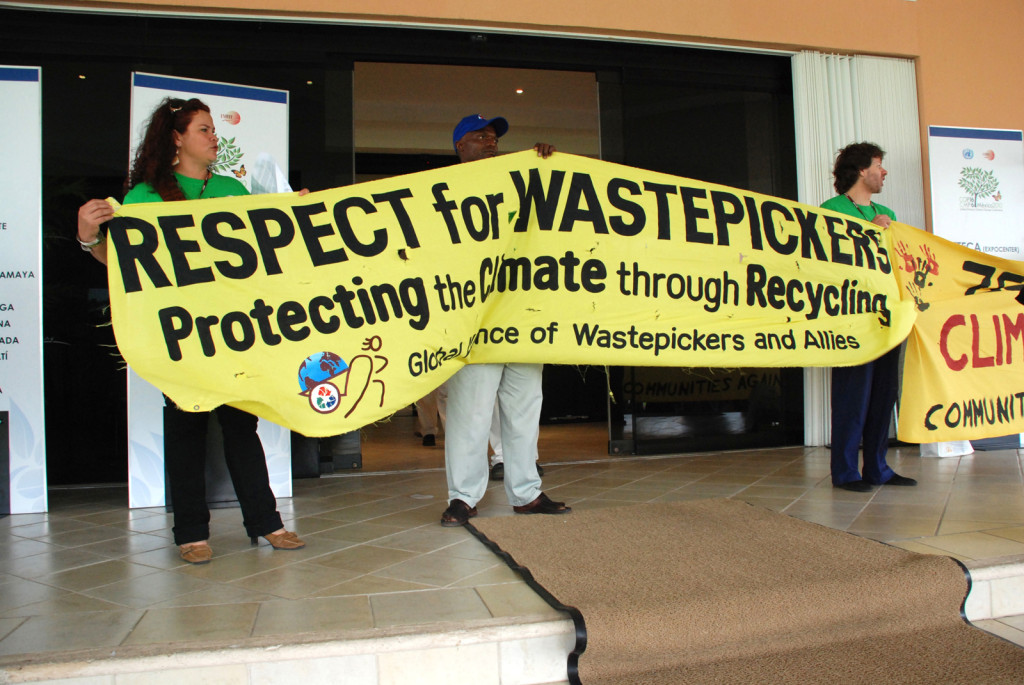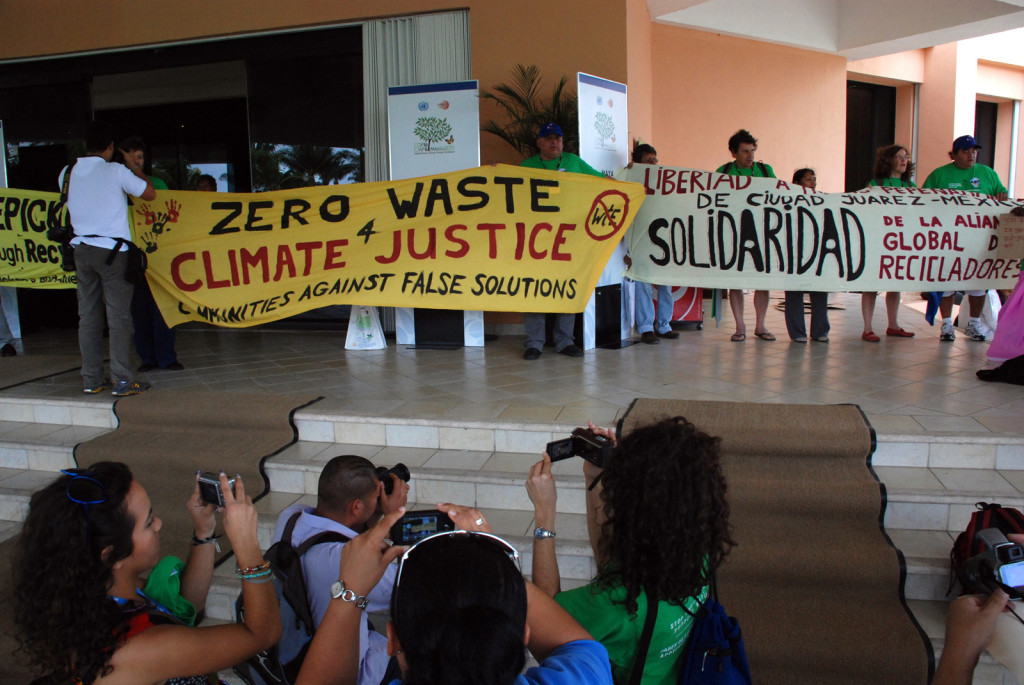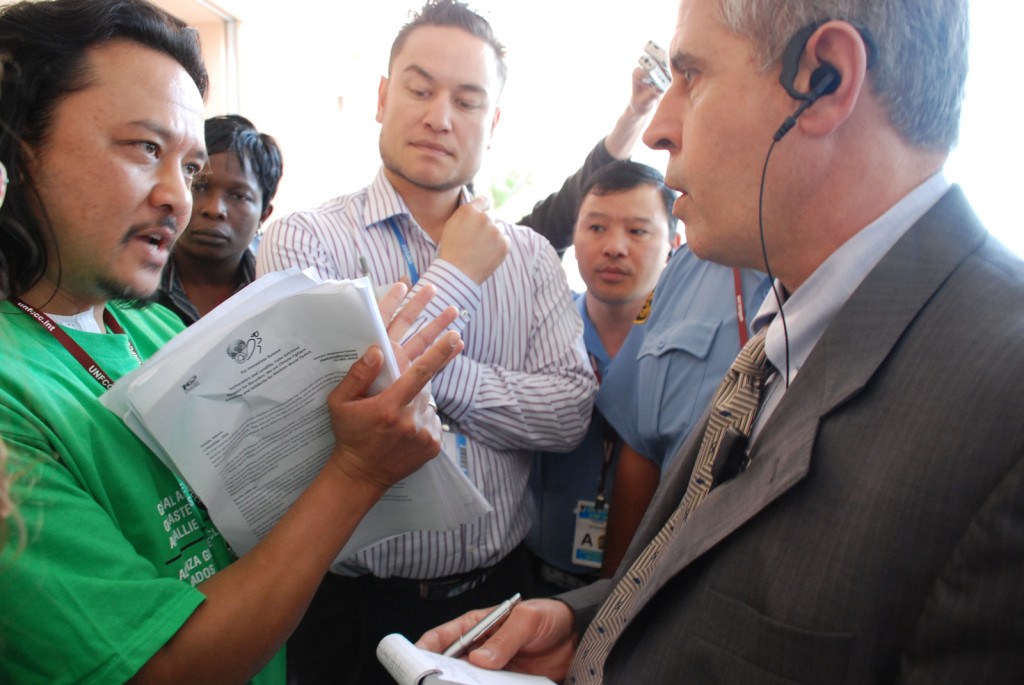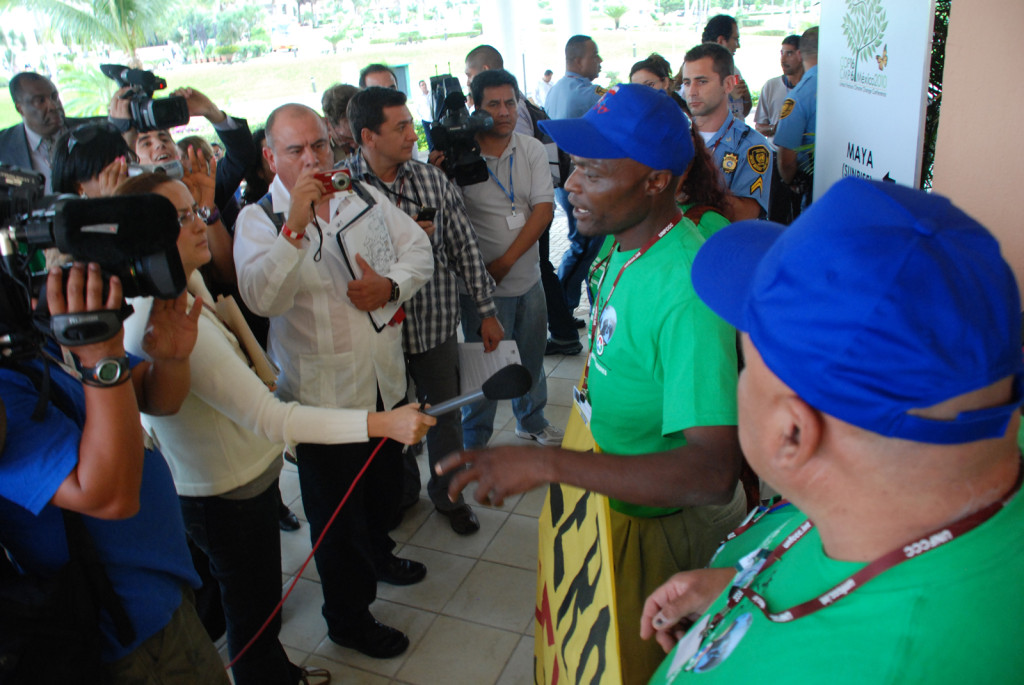By Anne Petermann, Executive Director, Global Justice Ecology Project
As I sat at home in northern Vermont yesterday, with the remnants of Hurricane Irene swirling outside, the rain beating in waves rhythmically on the roof, I thought about climate chaos—the intensifying effect the warming globe is having on the world’s weather; and I thought about the so-called leaders of this and other countries who stick their heads in the sand to ignore it, while corporations continue business as usual and the planet’s life-support systems steadily erode.
In the local paper on Saturday there was a front page article about the mobilization in Washington, DC against the tar sands: the world’s dirtiest source of oil and a major contributor to climate chaos. One barrel of tar sands oil results in three times the emissions of convetional oil. The oil is mined and extracted using a highly destructive and toxic process that poisons Indigenous communities and flattens boreal forests in the region of Northern Canada where the tar sands are found. Wildlife in the area is being devastated. Indigenous Environmental Network and other organizations have been campaigning to raise awareness about this horrific “gigaproject” for years now. And so far, several hundred people have willingly been arrested in Washington, DC to send politicians a message that they must stop all support for the tar sands project. IEN is calling for an Indigenous Day of Action this Friday.
Today, August 29th, is the birthday of our good friend and compañero, Will Miller. He would have been 71. He passed away in 2005. He was also one of Global Justice Ecology Project’s founding Board members. Will’s birthday and the tar sands civil disobedience campaign have made me think of another mass-mobilization in Washington, DC—this one happened 40 years ago on May Day 1971. It was called to stop another US government-backed horror—the Vietnam War. That mobilization was designed to shut down Washington, DC. To stop all business in the city. To let the politicians in Washington know in no uncertain terms that there would be no more business as usual until the war was ended.
I was not there, but my husband, Orin, was. As was Will. Though they did not know each other then. The May Day action plan was for affinity groups—tightly knit groups willing to take direct action together and risk arrest—to take over key locations across DC and shut them down. In Orin’s case, it was one of DC’s circle intersections. In the case of Will, it was the 14th street bridge. This collective direct action to shut down the city showed the country’s “leaders” that the anti-war movement was escalating its tactics in response to the growing body counts in Vietnam of both U.S. Soldiers and Vietnamese people. An estimated three million Vietnamese people were killed in that war, as were 60,000 U.S. soldiers. An additional 100,000+ U.S. soldiers who were in Vietnam committed suicide since returning from combat.

Will Miller (far left) at the 1971 May Day action in Washington DC.
The May Day mobilization was widely publicized and the authorities stood at the ready. Will (a veteran) and his affinity group had successfully taken over the 14th street bridge. The National Guard—a group of young soldiers recently returned from Vietnam—was called in to remove them from the bridge. The officer in charge ordered the soldiers to fix bayonettes and force the protesters off the bridge. These young draftees looked at the mix of veterans and activists on the bridge, then back at their commanding officer. Then they laid down their weapons and joined the protesters in blocking the bridge.
This, Will said, was what revolution would look like.
¡Will Miller, Presente!















